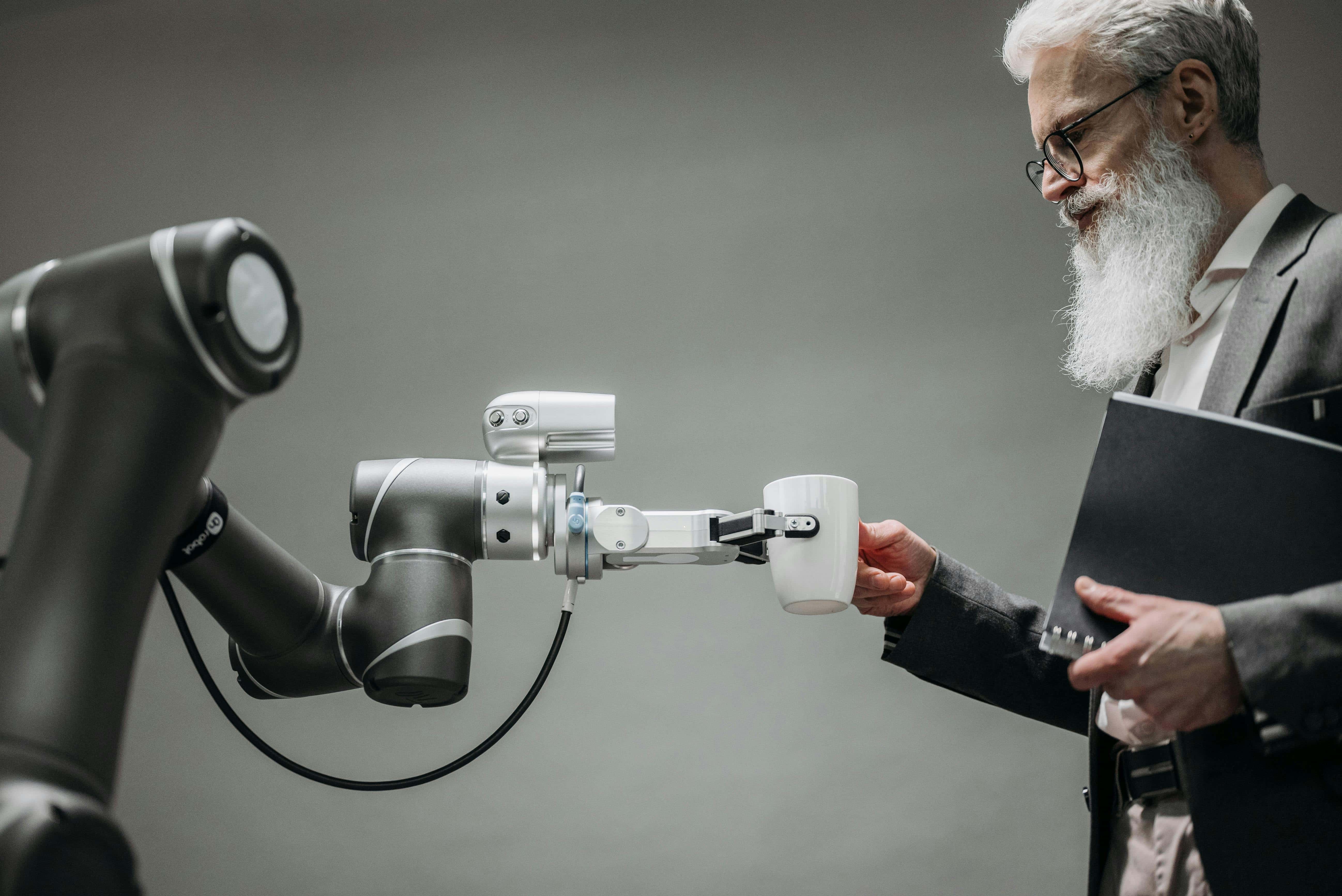Getting Over the Uncanny Valley in Gen AI Adoption

When generative AI burst into the workplace in late 2022, many organizations scrambled to make sense of the technology and how it could fit into their workflows. At Mural, a leading visual collaboration platform, the response was swift but measured. According to my interview with Jim Kalbach, Chief Evangelist at Mural, the company embraced the opportunity—but never at the expense of security, compliance, or user trust.
Embracing Gen AI, With a Dose of Caution
As a tech-forward, fully remote company with about 400 to 500 employees, Mural recognized the potential early on. “We have very high security standards, mostly because of our enterprise customers,” Kalbach explains. “But even so, we moved quickly to bring AI into our workflows.” From drafting emails in Gmail to summarizing conversations in Slack and fine-tuning workshop descriptions with an in-house AI chatbot, generative AI began seeping into everyday tasks across departments.
Still, Kalbach acknowledges there’s a divide. “There are power users, and there are skeptics. Some folks are just creeped out,” he admits. That discomfort, what he describes as a kind of uncanny valley, stems from AI’s speed and uncanny output—but also deeper concerns around data privacy and job security. “People feel like AI is getting too close, like someone standing too near you when they talk.”
These concerns are not unfounded. Headlines about job cuts linked to AI, such as Workday’s recent layoff of 1,800 developers, fuel the fire. “That uncertainty breeds hesitation,” says Kalbach. “People start thinking, ‘If AI can do this much now, what does that mean for me later?’”
Rolling Out Gen AI Thoughtfully
Despite these concerns, Mural didn’t let hesitation stall progress. The company rolled out a clear, early policy encouraging experimentation with generative AI—while maintaining strong boundaries around privacy and security. Led by the CIO and security teams, the policy balanced openness with compliance, enabling employees to explore use cases while staying within the lines of SOC 2 Type 2 certification requirements.
Interestingly, while security policies were clear, training on how to use Gen AI—what prompts work best, what tasks it excels at—was left more to individual initiative. “We didn’t get formal training on prompt engineering or use cases,” Kalbach notes. “A lot of learning happens through osmosis, conversations in Slack, or during brainstorming sessions.”
That lack of structured enablement, however, may limit the technology’s broader impact. “There’s a big imagination gap,” Kalbach explains. “People don’t always know how their work could be enhanced by AI, especially in a visual, non-linear space like Mural. They need help making that leap.”
From Magic to Muscle: Gen AI Inside Mural
Where the rubber really meets the road is in Mural’s own product, where Gen AI has been integrated into the core experience. As Kalbach puts it, “Mural is strongest in the fuzzy front-end of work—planning the plan, organizing chaos, bringing multiple perspectives together.” And this is exactly where Gen AI shines.
One of the most compelling use cases is mind mapping. Users can input a central idea and ask Mural’s AI to generate branches of sub-ideas—instantly populating the visual canvas. Need deeper ideation? Ask for ten more branches. Want to categorize sticky notes from a brainstorming session? Mural’s clustering and summarizing features use AI to do just that.
One feature Kalbach finds especially powerful is the AI chat panel, which is aware of the canvas content. “I had a bunch of sticky notes with dollar values. I asked it to sum them up and add the result to a new sticky note on the board. It worked like magic. I didn’t even need a spreadsheet.”
This kind of interaction, blending spatial reasoning and machine intelligence, is where Kalbach believes Gen AI moves from being a command-line tool to a graphical user interface—a GUI for the AI age. “For me, it makes AI tangible. I’m not just typing prompts into a black box. I’m interacting with ideas, seeing them come to life in a visual space.”
Still, while customers are often inspired by these capabilities, there’s a learning curve. Many enterprise clients—banks, consultancies, global corporations—are still working on their AI governance policies. As a result, Mural has seen faster adoption among smaller teams, startups, and individual users, while large enterprises move cautiously. “It was ironic. At first, we thought Gen AI would be a premium feature for our enterprise customers. But it turned out they were the slowest to adopt, simply because their policies weren’t ready.”
Bridging the Imagination Gap
To close this adoption gap, Mural is investing in customer enablement, peer mentorship, and success programs tailored to specific use cases. But even with the right tools, the leap to productive AI usage remains psychological. “You have to experience it,” Kalbach emphasizes. “Theory isn’t enough.”
His advice for organizations? Start small. “Try planning your day in Mural with AI. Or map out a vacation. Something low-risk, personal. Get used to the interface, the back-and-forth. Then pick one work habit—maybe summarizing a brainstorming session—and make that your AI habit. Once you see the value, it’s easier to expand.”
Kalbach also encourages companies to appoint AI champions—those naturally inclined to explore and teach. “I learn the most when I’m helping others,” he says. “Every time I explain a use case to a customer, I discover something new myself.”
Looking Ahead: AI as the Invisible Collaborator
As generative AI matures, Kalbach sees even more integration across internal functions. From software development acceleration to legal document redlining and real-time team transparency, the potential is vast. He envisions AI helping remote teams by connecting employees across time zones, surfacing relevant information, and even suggesting who to ask for help based on project histories.
But for now, the focus remains on cultivating trust and familiarity. “We’re still early. Gen AI is powerful, yes, but it’s also unfamiliar,” Kalbach says. “And people need time to reconcile that—between the magic and the unease.”
What’s clear is that Mural isn’t waiting for the uncanny valley to disappear. Instead, the company is building the bridges—policy, tooling, and training—that help people cross it. Step by step, use case by use case, the future of Gen AI is becoming less mysterious and more meaningful. And in that process, imagination becomes action.
Key Take-Away
The focus now is on building trust, comfort, and imagination—one use case at a time. Share on XImage credit: Pavel Danilyuk/pexels
Dr. Gleb Tsipursky was lauded as “Office Whisperer” and “Hybrid Expert” by The New York Times for helping leaders use hybrid work to improve retention and productivity while cutting costs. He serves as the CEO of the boutique future-of-work consultancy Disaster Avoidance Experts. Dr. Gleb wrote the first book on returning to the office and leading hybrid teams after the pandemic, his best-seller Returning to the Office and Leading Hybrid and Remote Teams: A Manual on Benchmarking to Best Practices for Competitive Advantage (Intentional Insights, 2021). He authored seven books in total, and is best know for his global bestseller, Never Go With Your Gut: How Pioneering Leaders Make the Best Decisions and Avoid Business Disasters (Career Press, 2019). His cutting-edge thought leadership was featured in over 650 articles and 550 interviews in Harvard Business Review, Forbes, Inc. Magazine, USA Today, CBS News, Fox News, Time, Business Insider, Fortune, and elsewhere. His writing was translated into Chinese, Korean, German, Russian, Polish, Spanish, French, and other languages. His expertise comes from over 20 years of consulting, coaching, and speaking and training for Fortune 500 companies from Aflac to Xerox. It also comes from over 15 years in academia as a behavioral scientist, with 8 years as a lecturer at UNC-Chapel Hill and 7 years as a professor at Ohio State. A proud Ukrainian American, Dr. Gleb lives in Columbus, Ohio. In his free time, he makes sure to spend abundant quality time with his wife to avoid his personal life turning into a disaster. Contact him at Gleb[at]DisasterAvoidanceExperts[dot]com, follow him on LinkedIn @dr-gleb-tsipursky, Twitter @gleb_tsipursky, Instagram @dr_gleb_tsipursky, Facebook @DrGlebTsipursky, Medium @dr_gleb_tsipursky, YouTube, and RSS, and get a free copy of the Assessment on Dangerous Judgment Errors in the Workplace by signing up for the free Wise Decision Maker Course at https://disasteravoidanceexperts.com/newsletter/.

